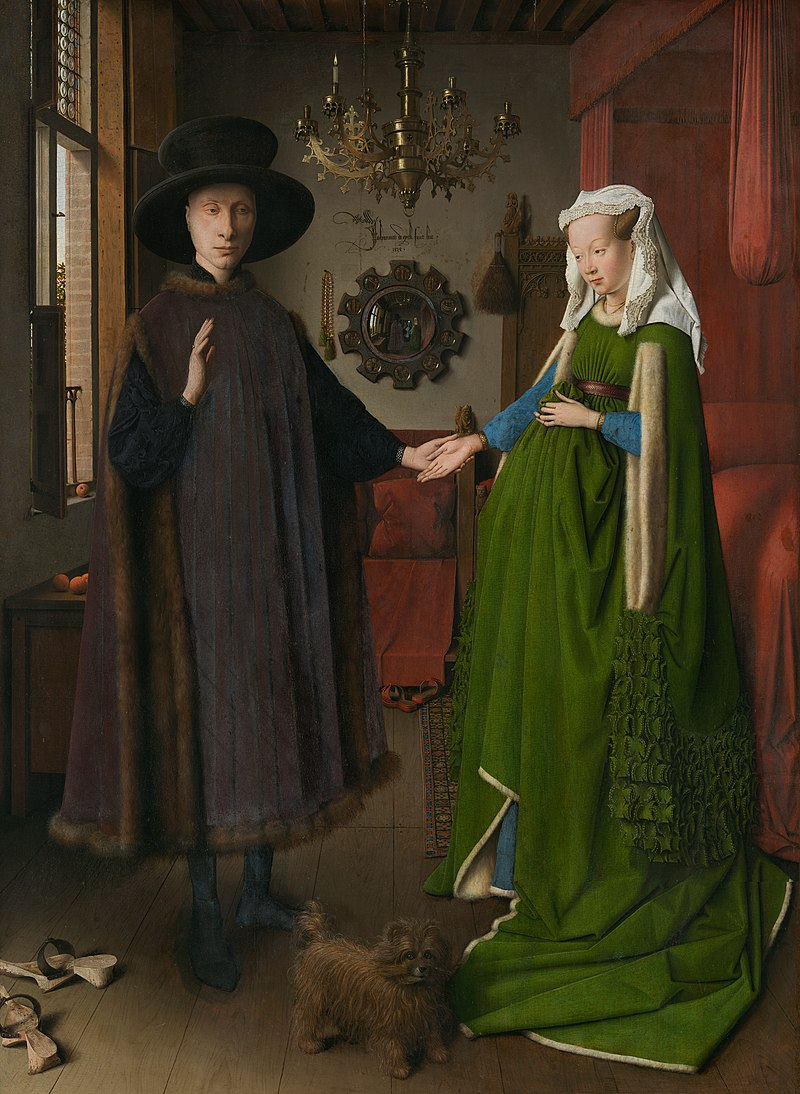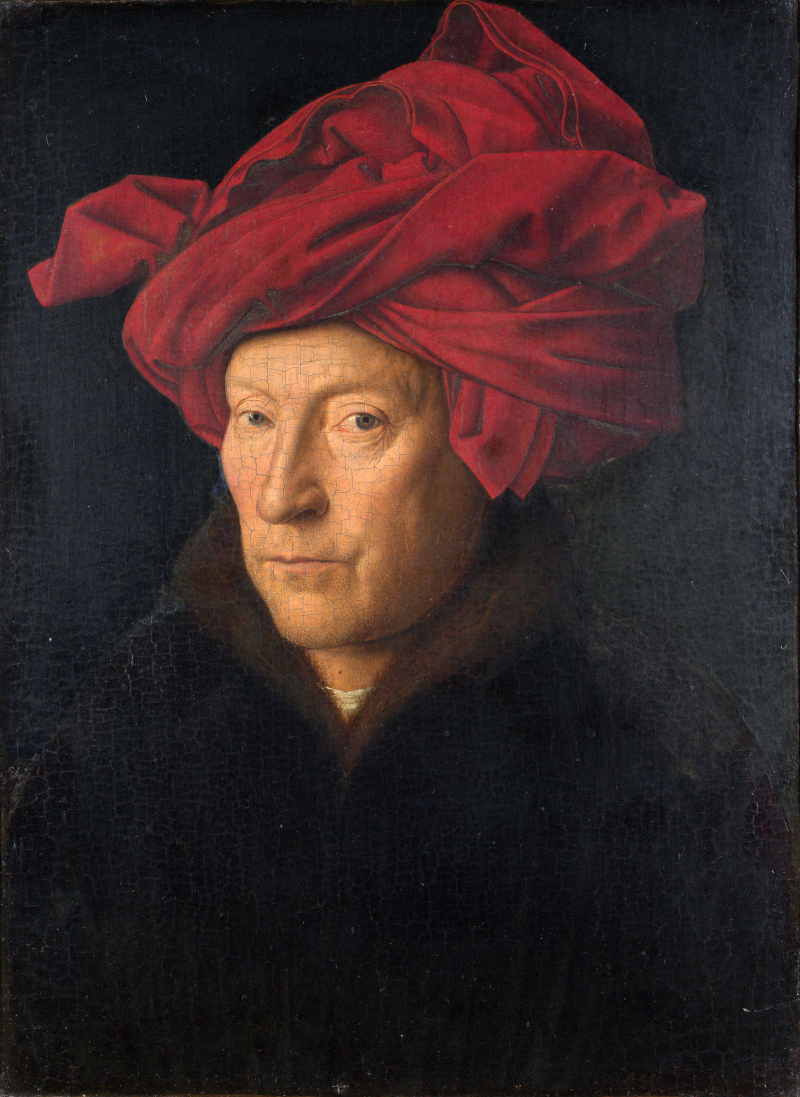Jan van Eyck, The Arnolfini Portrait
The Early Netherlandish artist Jan van Eyck created The Arnolfini Portrait in 1434 as an oil painting on an oak panel. It is a full-length double portrait that is thought to show the Italian businessman Giovanni di Nicolao Arnolfini and his wife, most likely in their Bruges, Belgium, home. Its beauty, intricate iconography, geometric orthogonal perspective, and use of a mirror to expand the image space make it one of the most innovative and complicated paintings in Western art. The National Gallery in London acquired the artwork in 1842.
This composition, one of the most important works created during the Northern Renaissance, is said to be among the earliest oil paintings ever created. It is said to be a full-length double portrait of an Italian merchant and a woman who may or may not be his bride. The renowned art critic Erwin Panofsky said that the artwork is actually a marriage contract in 1934. It is safe to say that the painting is one of the first interiors to use orthogonal perspective to create a sense of space that is adjacent to the viewer's own; it has the appearance of a picture you could enter.
The painting's illusionism was noteworthy for its time due to its "utterly convincing picture of a room, as well as the people who occupy it," as well as its rendering of detail and use of light to imply space in an interior. According to Craig Harbison, the painting's significance depends on how the scene and its specifics are interpreted "is the sole remaining panel from the fifteenth century in Northern art in which the artist's contemporaries are seen taking part in some form of activity in a modern setting. It is tempting to refer to this as the first genre painting of the modern era because it depicts daily life ".
Artist: Jan van Eyck
Created: 1434

















